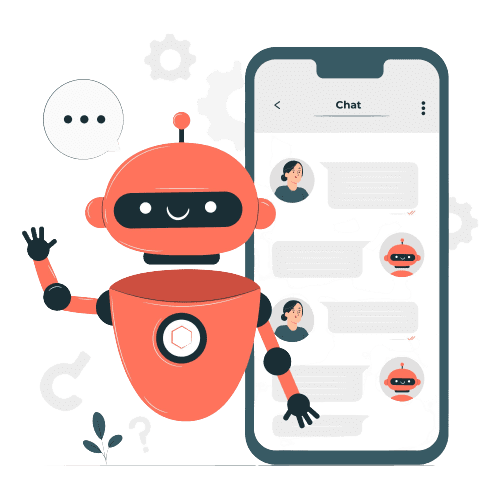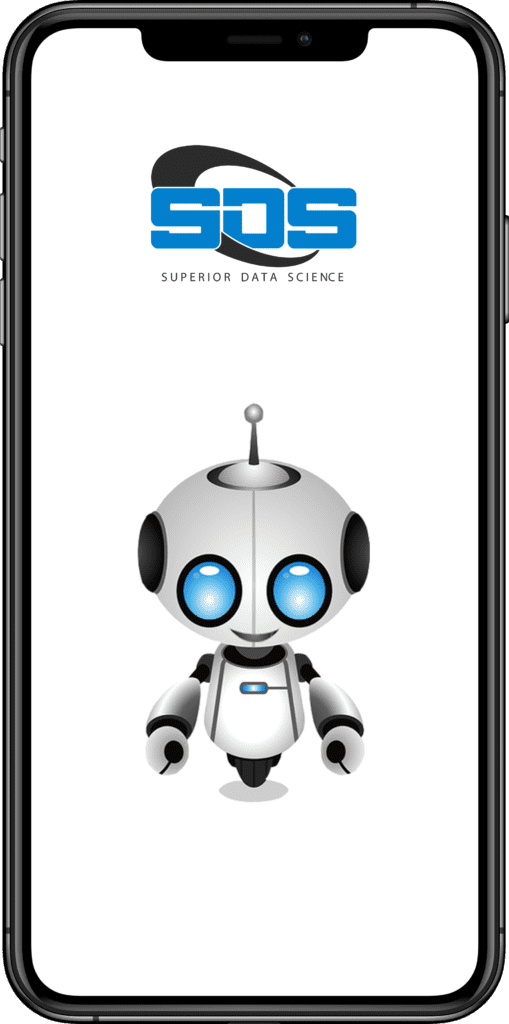Case Study on Chatbot: Enhancing Retail and Customer Service with Chatbot Implementation :
Background: Case Study on Chatbot:With the rise of e-commerce and the growing number of digital consumers, companies have had to adapt to the changing landscape by providing customer service through various channels. One such channel is the use of chatbots. Case Study on Chatbots has become an increasingly popular solution in which computer programs utilize artificial intelligence (AI) to mimic human conversation. These chatbots can be seamlessly integrated into websites, mobile apps, and social media platforms, enabling businesses to provide customers with quick and efficient support.
Solution: One industry that has embraced chatbots is the retail industry. Companies in this sector have implemented chatbots to provide customers with personalized recommendations, answer product-related questions, and process orders. Chatbots are also used to improve customer service by providing quick responses to inquiries and reducing wait times.
Implementation: Several retail companies have implemented chatbots to improve customer service, including Sephora and H&M. Sephora conducted a case study on chatbot implementation and integrated a chatbot into its mobile app, utilizing AI to recommend products based on customers’ skin type, tone, and preferences. This successful implementation highlights how Sephora leveraged AI technology to enhance customer engagement and increase sales. Similarly, H&M, a fashion retailer, conducted its own case study on chatbot implementation. H&M’s chatbot, integrated into their website, streamlines order management and assists customers. It efficiently handles order status updates, shipment tracking, and returns, resulting in reduced wait times and improved customer satisfaction. This case study further demonstrates the effectiveness of AI-powered chatbots in enhancing the customer experience in the retail industry.
Results: The implementation of chatbots in retail, as demonstrated in the mentioned case studies on chatbot, has led to several benefits for both customers and businesses. For customers, chatbots provide quick and efficient support, which leads to improved satisfaction rates. Additionally, chatbots enable personalized shopping experiences by recommending products that meet individual needs, as showcased in the Sephora case study on chatbot. For businesses, chatbots reduce the workload of customer service representatives, resulting in cost savings. Moreover, chatbots generate valuable data on customer preferences and behavior, which can be analyzed to enhance the overall customer experience and drive sales growth.
Conclusion: Based on the analyzed case studies on chatbot implementation in the retail industry, it is evident that chatbots have significantly improved the customer experience and increased sales. Chatbots offer prompt and efficient support, leading to enhanced satisfaction rates. Businesses benefit from cost savings and valuable insights into customer preferences and behavior. As the use of chatbots continues to grow, more companies in the retail industry are expected to adopt chatbot solutions to enhance their customer service strategies. The success stories presented in the case studies on chatbot implementation emphasize the effectiveness of AI-powered chatbots in revolutionizing customer service in the retail sector.
Case Study: Chatbots in Healthcare :
Background: The healthcare industry is one that has seen an increased adoption of chatbots. Healthcare providers have implemented chatbots to improve patient engagement, provide 24/7 support, and streamline administrative tasks. Chatbots can also be used to provide patients with educational information on various health conditions and treatments.
Solution: One example of a healthcare provider that has implemented a chatbot is the Mayo Clinic. The Mayo Clinic is a healthcare organization that provides medical care and education. The organization has implemented a chatbot on its website to help patients find information on medical conditions and treatments. The chatbot uses natural language processing (NLP) to understand patient inquiries and respond with relevant information. The chatbot has been successful in improving patient engagement and reducing wait times for patients seeking medical information.
Implementation: Other healthcare providers have also implemented chatbots to improve patient engagement and streamline administrative tasks. For instance, Babylon Health is a healthcare provider that has implemented a chatbot to provide patients with 24/7 support. The chatbot can provide patients with medical advice, help patients book appointments, and provide information on health conditions and treatments. The chatbot has been successful in reducing wait times for patients seeking medical advice and improving patient satisfaction rates.
Results: The implementation of chatbots in healthcare has led to several benefits for both patients and healthcare providers. Chatbots offer patients round-the-clock support, enhancing engagement and satisfaction rates. Additionally, they assist healthcare providers in streamlining administrative tasks like appointment booking and medical record-keeping. Furthermore, chatbots enable healthcare providers to deliver educational information to patients regarding diverse health conditions and treatments, thereby contributing to improved patient outcomes.
Conclusion:
The use of chatbots in healthcare has been successful in improving patient engagement, satisfaction rates, and outcomes. Chatbots provide patients with 24/7 support and educational information, which leads to improved engagement and satisfaction rates. Chatbots also help healthcare providers streamline administrative tasks, which leads to cost savings and improved efficiency. As the use of chatbots continues to grow, we can expect to see more healthcare providers implementing chatbots to improve patient care.
Case Study: Chatbots in Banking :
Background:
The banking industry is one that has also seen an increased adoption of chatbots. Banks have implemented chatbots to provide customers with 24/7 support, process transactions, and provide personalized financial advice. Chatbots can also help banks reduce wait times for customers and improve the customer experience.
Solution:
One example of a bank that has implemented a chatbot is Capital One. Capital One is a financial services company that provides credit cards, loans, and banking services. The company has implemented a chatbot on its website and mobile app to provide customers with support and personalized financial advice. The chatbot uses AI to understand customer inquiries and respond with relevant information. The chatbot has been successful in improving customer engagement and satisfaction rates.
Implementation:
Other banks have also implemented chatbots to provide customers with 24/7 support and process transactions. For instance, Bank of America has implemented a chatbot on its mobile app to help customers with their banking needs. The chatbot can provide customers with account balances, transaction histories, and help customers pay bills. The chatbot has been successful in reducing wait times for customers and improving the customer experience.
Results:
The implementation of chatbots in banking has led to several benefits for both customers and banks. By providing customers with 24/7 support and personalized financial advice, chatbots enhance customer engagement and satisfaction rates. They assist banks in reducing wait times for customers, thereby improving the overall customer experience. Moreover, chatbots enable banks to streamline administrative tasks, resulting in cost savings and enhanced efficiency.
Conclusion:
The use of chatbots in banking has been successful in improving customer engagement, satisfaction rates, and efficiency. By offering customers 24/7 support and personalized financial advice, chatbots contribute to heightened engagement and satisfaction rates. In addition, chatbots assist banks in reducing customer wait times and enhancing the overall customer experience. They also play a role in streamlining administrative tasks for banks, leading to cost savings and improved operational efficiency. As the use of chatbots continues to grow, we can expect to see more banks implementing chatbots to improve customer service.
Case Study: Chatbots in Education :
Background:
The education industry is one that has also seen an increased adoption of chatbots. Educational institutions have implemented chatbots to provide students with 24/7 support, answer student inquiries, and provide educational resources. Chatbots can also help educational institutions reduce administrative tasks and improve student engagement.
Solution:
One example of an educational institution that has implemented a chatbot is Georgia State University. Georgia State University is a public research university that provides undergraduate and graduate degrees. The university has implemented a chatbot on its website and mobile app to provide students with support and answer student inquiries. The chatbot uses NLP to understand student inquiries and respond with relevant information. The chatbot has been successful in reducing wait times for students and improving student engagement.
Implementation:
Other educational institutions have also implemented chatbots to provide students with 24/7 support and answer student inquiries. For instance, Arizona State University has implemented a chatbot named Sun Devil Bot to help students with their academic needs. The chatbot can provide students with course information, exam schedules, and help students schedule appointments with academic advisors. The chatbot has been successful in reducing wait times for students and improving student engagement.
Results:
The implementation of chatbots in education has led to several benefits for both students and educational institutions. Chatbots provide students with 24/7 support and educational resources, which leads to improved student engagement and satisfaction rates. Chatbots can also help educational institutions reduce administrative tasks, such as answering student inquiries and scheduling appointments, which leads to cost savings and improved efficiency.
Conclusion:
The use of chatbots in education has been successful in improving student engagement, satisfaction rates, and efficiency. Chatbots provide students with 24/7 support and educational resources, which leads to improved engagement and satisfaction rates. Chatbots also help educational institutions reduce administrative tasks, which leads to cost savings and improved efficiency. As the use of chatbots continues to grow, we can expect to see more educational institutions implementing chatbots to improve the student experience.
Case Study on Chatbots in Retail :
Background: The retail industry is one that has also seen an increased adoption of chatbots. Retailers have implemented chatbots to provide customers with 24/7 support, process orders, and provide personalized recommendations. Chatbots can also help retailers reduce wait times for customers and improve the customer experience.
Solution: One example of a retailer that has implemented a chatbot is H&M. H&M is a multinational clothing retailer that offers clothing, accessories, and home decor products. The company has implemented a chatbot on its website and mobile app to provide customers with support and personalized recommendations. The chatbot uses AI to understand customer inquiries and respond with relevant information. The chatbot has been successful in improving customer engagement and satisfaction rates.
Implementation: Other retailers have also implemented chatbots to provide customers with 24/7 support and process orders. For instance, Sephora has implemented a chatbot on its mobile app to help customers with their beauty needs. The chatbot can provide customers with product recommendations, help customers schedule appointments at a Sephora store, and provide customers with beauty tips. The chatbot has been successful in reducing wait times for customers and improving the customer experience.
Results: The implementation of chatbots in retail has led to several benefits for both customers and retailers. By providing customers with 24/7 support and personalized financial advice, chatbots enhance customer engagement and satisfaction rates. They assist banks in reducing wait times for customers, thereby improving the overall customer experience. Moreover, chatbots enable banks to streamline administrative tasks, resulting in cost savings and enhanced efficiency.
Conclusion:
The use of chatbots in retail has been successful in improving customer engagement, satisfaction rates, and efficiency. With 24/7 support and personalized recommendations, chatbots empower customers, leading to improved engagement and satisfaction rates. Retailers benefit from reduced wait times and enhanced customer experiences facilitated by chatbots. Moreover, chatbots streamline order processing, resulting in cost savings and improved operational efficiency for retailers. As the use of chatbots continues to grow, we can expect to see more retailers implementing chatbots to improve the customer experience.
Conclusion :
The adoption of chatbots across various industries has led to several benefits, including improved engagement, satisfaction rates, and efficiency. Chatbots provide users with 24/7 support, personalized recommendations, and educational resources, which lead to improved engagement and satisfaction rates. Chatbots also help businesses reduce wait times for users and streamline administrative tasks, which leads to cost savings and improved efficiency. As the use of chatbots continues to grow, we can expect to see more businesses leveraging this technology to enhance their customer service strategies.






